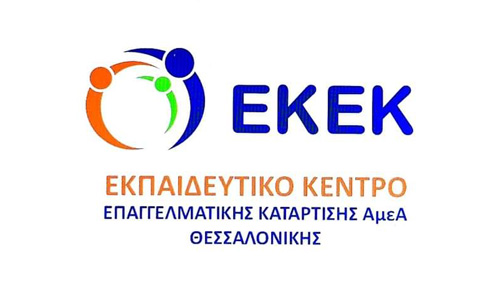ΕΚΕΚ ΑμεΑ Θεσσαλονίκης
How simulating a real work environment within the carpentry department prepares students for future work in industry
by Anastasia Anastasiadou and Zografia Xanthopoulou
Published 31/10/2022

by Anastasia Anastasiadou and Zografia Xanthopoulou
Published 31/10/2022
EKEK AMEA of THESSALONIKI is a vocational school for people with disabilities who have completed their compulsory education. The school is part of the Manpower Employment Organization, that recently changed its name into Public Employment Services. The main goal of the school is to prepare students for the world of work and also to help all students, so they will acquire knowledge and skills that will enhance their self-confidence and lead them to the conquest of autonomy. The school has modern laboratories equipped with all the necessary means so that students become familiar with the most propriate way in the specialties of Information Technology, agriculture, carpentry, weaving and cutting sewing. Their preparation is followed by their participation in the work centres so that students have the opportunity to be prepared professionally and to be connected with the labour market. Students are preparing for the most contemporary professions with the greatest demand.
In the Carpentry Department students become familiar with the tools and techniques to use within tasks that require detail, such as decorative objects and construction tasks. All areas comply with safety rules.
The focus of this study is the familiarization of students within the Carpentry Department, with a moderate learning disability, aged 18 to 30, with real working conditions. This familiarity is achieved by gradually adapting students from small rooms and using of small tools to training in larger spaces with more complex equipment. Here they are similar to real work environments, and by using professional tools that require all necessary safety measures they are able to simulate a real work context. The beneficiaries of this practice are all students of the carpentry department, who gradually acquire skills and prepare to work in real workplaces, acquiring the feeling of responsibility and safe work.
This good practice applies to the entire specialty of the faculty’s carpentry department. The beneficiaries are the woodworking students, both during the first 4 years of their training and during their participation in the Work Centres. The practice of gradually familiarizing students with the tools and equipment of the workshops and observing the safety rules, enables students to maintain a steady growth in skills and confidence.
Students in the Carpentry Department attend a specific program, as is done in all specialties of the school. For the first 4 years, students are trained to acquire knowledge and skills in the subject, and for the next 3 years they progress to Work Centres within the school where training is now focused on the manufacture and marketing of products designed and made by themselves (picture 1). The aim in this whole process is for students to gradually acquire all the necessary skills for their professional autonomy. The emphasis is on working in real conditions and observing safety standards.
In the Work Centres, students work with large constructions, acquire measuring skills and use professional equipment. At all levels, particular attention is paid to the observance of safety rules. From the posture and the way the professional machines operate, to the proper behaviour and familiarization with the electronic systems of the machines, teachers give the appropriate instructions and are always next to students until all the necessary skills are acquired.
After the students have received the necessary knowledge and completed their four-year education, they enter the Work Centres, where they acquire self-confidence and autonomy always with the discreet supervision of their teachers. In the Work Centres, students see their efforts to bear fruit as in cooperation with other bodies, they undertake projects and bring them to their own conclusion (picture 2).
The benefits of this case study are observed in students who, in addition to the knowledge and skills they acquire, also benefit in the following areas:
The gradual familiarization with equipment, the partial acquisition of knowledge and skills and especially safety rules is a practice that can have a very beneficial effect on the training of people with disabilities, especially those who have chosen a profession like that of carpenters that has an increased risk. Moreover, assigning tasks to students who have acquired the skills is a practice that enhances their self-esteem and helps them with unsupported work. The practice of the carpentry department for all 7 years of training of its students is a practice that enhances the skills and confidence of students and leads them to practice their profession safely and can be an example for others to follow (picture 3).
Student quotes
“I have learned to use the tools safely.”
“I count first and then I cut.”
“I did this job with my classmates.” (for the construction of a small boat that the University of Macedonia had ordered from the students of the carpentry department.) (picture 4)